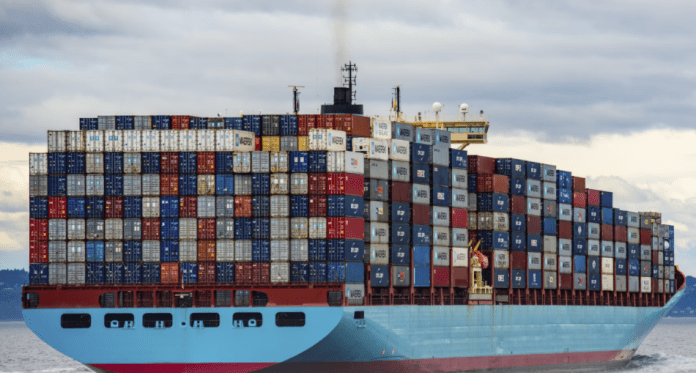By Nazery Khalid
Nazery shares the impacts of the Russian-Ukrainian conflict on seaborne trade, supply chains and the marine industry
On 23 February 2022, Russian President Vladimir Putin announced a ‘special military operation’ in Ukraine, a country which Moscow wants to maintain as a buffer against the influence of NATO, the European military alliance.
Two months into the conflict, untold miseries have already been inflicted on Ukraine – with mounting casualties and injuries of soldiers and civilians, destruction of cities and towns, and millions of Ukrainians fleeing to seek refuge in neighboring countries. Russia’s indiscretion has triggered the United States and its NATO allies to impose tough economic sanctions in retaliation, aimed to insulate Moscow and punish it economically.
Russia is the world’s 11th largest economy, contributing 1.95% to global GDP (2021 World Bank ranking) and a main exporter of oil, gas, minerals and military equipment. Given the size of its economy which is fairly well integrated into the global supply chain, Russia has inevitably felt the bite of the sanctions despite countries like China and India and several counties in Africa maintaining economic and trade ties with it.
Given the importance and dominance of seaborne transport in facilitating global trade, it is not surprising that the Russia-Ukraine war has unleashed effects beyond the borders of those countries. The conflict has triggered ripple effects on international seaborne trade, the marine industry and maritime supply chains, and even threatens to dampen the recovering world economy still reeling from the COVID-19 pandemic.
Domino effect
While the long-term impacts of a prolonged conflict and sanctions on Russia on global seaborne trade and supply chains, the maritime sector and global economy are anybody’s guess, the adverse effects can already be seen and even appear capable of leaving an indelible mark in these areas. The most notable ones, in no particular order of importance, are as follows :
- Snarl in shipping schedules and reduction of number of ship sailings to Russian and Ukrainian ports. This is caused by the security situation the sanction and Russian forces blocking shipping routes which Ukraine depends on. Some shipping companies – including the world’s largest container operators such as Maersk, MSC and CMA CGM – have canceled Russian ports from their schedules altogether as a reaction to the sanctions and for fear of being caught in the line of fire during the conflict. Various authoritative maritime and shipping portals and sources have estimated that the increasing number of carriers that have suspended services in Russia comprise 60% of total ocean freight capacity handling the country’s seaborne trade. Another impact of this is the shortage of shipping crew, not surprising given that Ukrainian and Russian seafarers account for nearly 15% of the global shipping workforce of 1 million.
- Attacks on merchant ships in seaborne trade routes bordering Ukraine. Most affected are shipping services in the Black Sea and Sea of Azov bordering Russia on the southeast and Ukraine on the northwest. Sea of Azov is one of the few access points to Ukraine’s international trade, 70% of which are transported by ships. The two waterways are now dangerous for shipping if not altogether unpassable, and there have been reports of missile attacks on vessels, ship arrests and closures of routes for commercial vessels. The attacks and blockade have resulted in a heavy buildup of vessels waiting to get through the Kerch Strait connecting Black Sea and Sea of Azov.
- Spike in shipping freight rates owing to disruption in shipping schedules, shortage of capacity and rising oil prices and shipping insurance. Most notably are rates in the tanker trade which facilitates the carriage of oil, gas and chemical cargos. Container freight rates have increased tenfold a mere two weeks after the war began, while tanker rates servicing Russian and Ukrainian ports have skyrocketed, shooting up close to 600% in some instances. Daily rates of tankers shot up from around US$3,000 per day before the war to an whopping US$30,000-40,000 now, as a result of fewer ships sailing from Russia and Ukraine.
- Suspension of operations by several international logistics firms in Russia arising from the sanctions. DHL has announced the closure of its offices and operations in Ukraine until further notice, while UPS has stopped its services to and from Ukraine, Russia and Belarus. FedEx has also joined the growing list of multinational companies complying with the economic sanction against Russia. This looks set to cause an adverse effect to international supply chains given the extent and depth of trade and logistics connectivity and integration amongst countries, including Russia and Ukraine. As logistics firms continue to suspend services in those countries as the situation becomes increasingly dangerous for their operations, bottlenecks are bound to build up along supply chains facilitating cargo movements to and from Russia and Ukraine.
- Disruption to air freight services serving Russia and Ukraine trade. The domino effect on supply chains arising from the conflict can be seen in transport modes that facilitate those countries’ trade and beyond. These include air transport which although not as widely used as shipping and land-based transport to facilitate the trade of those countries, is nonetheless an important mode of trade transport. Airfreight capacity has been scaled back as airspace over Ukraine is closed and airlines avoid flying across Russian airspace. As airfreight carriers avoid Russian and Ukraine airspace, they will take an alternate, longer routes, pushing up rates to enable them to cover higher fuel costs. This presents a double whammy to importers and exporters who now find the capacity of airfreight transport, an alternative to shipping albeit a more expensive one, greatly reduced and air freight rates leaping skywards.
- Rise in oil price. As Russian oil exports suffer a drop from the sanctions, oil price has climbed up to dizzying heights, with the price of US Brent crude, an international bellwether for the oil price, surging to US$130 per barrel. The spike in oil price, inching closer to record levels, has made the already gloomy outlook for shipping lines and airfreight carriers even worse. As they grapple with ever-growing delays and backlogs at ports, airports, and along supply chains, they will have to deal with the enormous challenge of operating amid sky-
high oil price.
- The snare of cargos at Ukrainian ports caused by slower clearance process owing to damaged port equipment, seafarers being trapped on ships berthed in ports, and closure of ports. The most affected ports are Odessa and Mariupol – targets of relentless Russian attacks – which are closed, damaged or under attack. Cargos cannot be offloaded from ships and loaded onto them at those ports, causing their flow to halt to a standstill.
- Rise in marine insurance rates for voyages in the seas in the theater of conflict. The increase of risks to ships traversing the Black Sea and Sea of Azov being attacked has sent marine insurance underwriters scurrying to push up premiums to ship goods through those treacherous waters. As reports emerge of merchant ships traversing the Black Sea and the Sea of Azov being hit by munitions, damaging ships and cargos and even killing seafarers, some carriers have started to impose war risk surcharges on voyages through the affected seaborne routes. They will no doubt maintain or even jack up insurance rates as the situation worsens.
- Rising cost of goods. Inevitably the production disruptions in Russia and Ukraine, the bottlenecks at ports, disruptions to shipping schedules, snares in the supply chains, higher freight rates, and the rise in insurance cost of transporting trade have pushed up the prices of goods. Already, there is a shortage and increase in the prices of gas from Russia and wheat from Ukraine, affecting countries that are dependent on their supplies. If this is prolonged, it could lead to disruptions to economic activities, inflation, recession and even famine in some countries which trade heavily with Russia and Ukraine.
The plight of seafarers
As the war enters its second month and as more damages, pain and misery are inflicted on Ukraine, international seaborne trade and supply chains plus the maritime sector that facilitates them look set to continue to bear the brunt of the conflict.
While the world looks on in aghast at the mounting deaths of civilians in Ukraine, the wanton destruction of cities and the impotent, ineffective international efforts to put a stop to the crisis, seafarers who are faithful servants of global trade continue to suffer as ‘collateral damage’ of the war.
Unless the hiccups and snarls along the seaborne trade and supply chains are unlocked, the smooth flow of cargos would not be achieved. Given the overwhelming dependence of global trade on shipping to facilitate its flow, the war would continue to hamper efficient trade movement along supply chains.
To eliminate the disruptions and unblock the obstacles hampering seaborne trade caused by the war, the operations of ports, ships, logistics companies and other players along the supply chains must be guaranteed. Most importantly, the safety and security of their personnel must be secured and their smooth passage to carry out their work without hindrance to facilitate the movement of cargos must be restored. For example, in the area of crew change, efforts must be made to enable seafarers to join and disembark ships seamlessly so they can facilitate seaborne trade. However, this has not been easy since the outbreak of the war as flights to and from Russia and Ukraine have been canceled. Fearing for their safety, some crews have even abandoned their ships in Ukraine while some shipowners have stopped sending their ships to Ukraine and Russia to avoid putting themselves and their crew in harm’s way and to dodge the expensive insurance premiums.
Another punitive measure by the United States, its European allies and Canada is cutting off Russia from SWIFT, the network linking financial institutions in almost all of the world’s countries. This further piles on the misery for Russian seafarers and those working onboard Russian-owned and flagged merchant ships who now face problems receiving their pay.
The plunge in the Ruble, Russia’s currency arising from the economic sanctions has also affected seaborne trade. Many Russian companies have found themselves not being able to afford to pay for merchandise onboard ships owing to the devaluation of the Ruble. This has caused abandoned shipments of cargo and unpaid freight bills. Seafarers working onboard Russian vessels and earning in Ruble are also affected as they find difficulty getting paid and the value of their earnings erodes with the currency heading south.
We can certainly expect more political, strategic, and economic effects to be generated by this conflict, especially if it escalates and starts drawing the participation of other countries. While we hope and pray that Ukraine will be spared from further deaths, suffering and destruction, and a truce will be called quickly to end the war, we will continue keeping an eye on the conflict’s impacts on seaborne trade, supply chains, and marine industry,
The author welcomes comments at [email protected]









